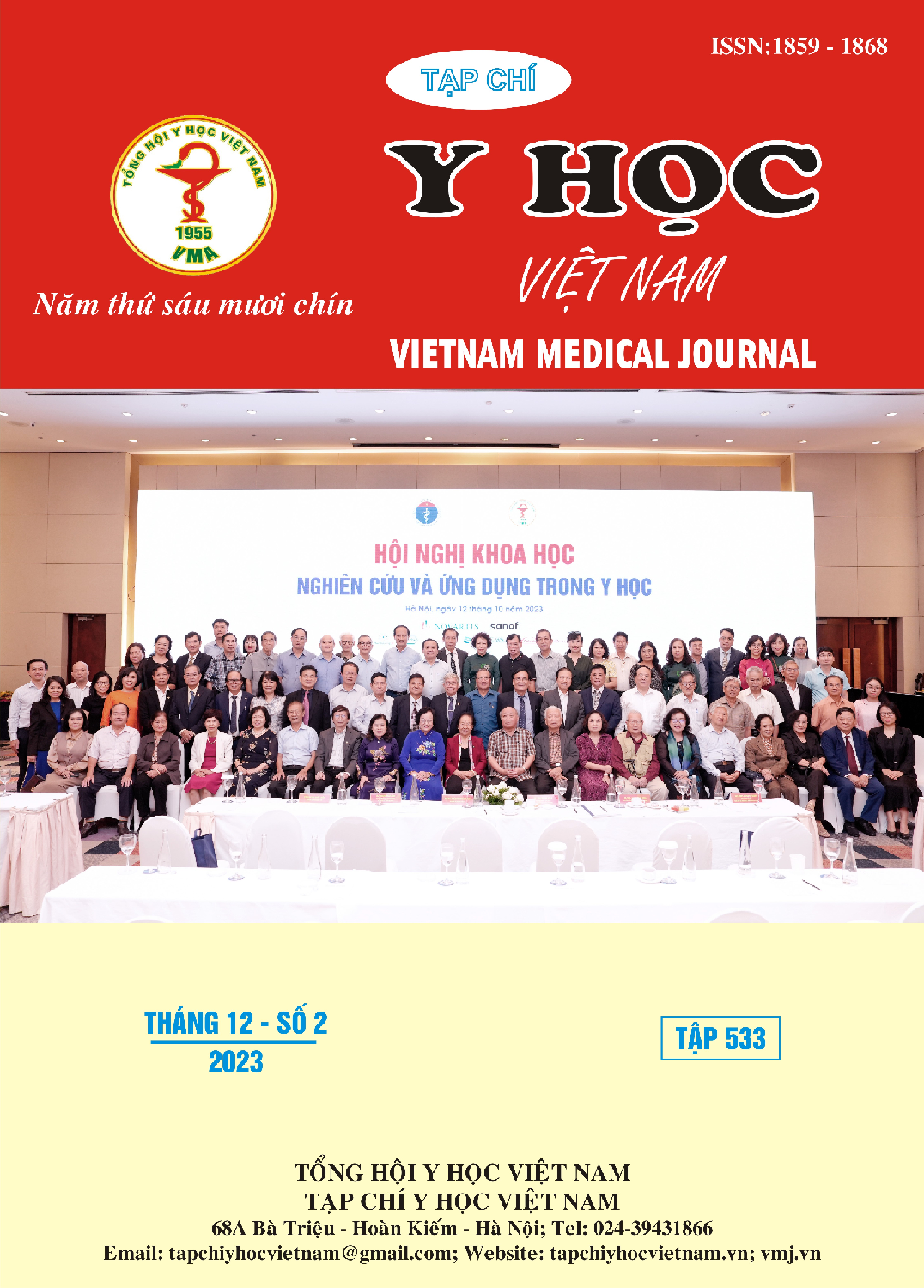A STUDY ON THE CLINICAL AND LABORATORY TESTS CHARACTERISTICS OF PATIENTS WITH ERYTHEMA NODOSUM AT UNIVERSITY MEDICAL CENTER OF HO CHI MINH CITY
Main Article Content
Abstract
Background: Erythema nodosum (EN) is the most common manifestation of adipose tissue inflammation, a hypersensitive reaction triggered by infection, pregnancy, drugs, connective tissue disease, or malignancy. It is crucial to have an approach based on clinical symptoms, laboratory tests, and individual patient history to guide the necessary tests to help diagnose the disease. From there, propose appropriate treatment methods and evaluate the patient's ability to respond to treatment. Objectives: To describe the clinical and subclinical characteristics of patients with erythema nodosum at University Medical Center in Ho Chi Minh City and investigate some factors related to the ability to respond to treatment on research subjects. Subjects and methods: A prospective, descriptive case series study was performed on all patients with erythema nodosum treated from 08/2021 to 03/2023 at University Medical Center in Ho Chi Minh. Results: Of the 42 participants, the majority were female (female/male = 5/1) with a mean age of 38.6 years (range 18 to 72 years). Clinical symptoms included local pain (100%), fever (33.3%), joint pain (14.3%), fatigue (9.5%), anorexia and itching (1%). In addition, 25% presented related signs such as mouth ulcers and lymphadenopathy, genital ulcers, dyspnea and diarrhea, mouth sores, and diarrhea. The laboratory test evaluation revealed elevated erythrocyte sedimentation rate (VS) and C-reactive protein (CRP). Notably, the analysis showed that medical history was associated with treatment response in EN patients. Conclusion: Our study analyzed the characteristic clinical and laboratory features of patients with Erythema nodosum (EN). EN patients have an average age of 38.6 ± 13.95 years, with a female predominance. Common rash locations are the legs, arms, abdomen and thighs. Common clinical symptoms are local pain, fever, and joint pain. Patients also have changes in blood counts and inflammatory responses.
Article Details
References
2. Cribier, B., et al., Erythema nodosum and associated diseases. A study of 129 cases. International journal of dermatology, 1998. 37(9): p. 667-672.
3. Mert, A., et al., Erythema nodosum: an evaluation of 100 cases. Clinical and experimental rheumatology, 2007. 25(4): p. 563.
4. Mert, A., et al., Erythema nodosum: an experience of 10 years. Scandinavian journal of infectious diseases, 2004. 36(6-7): p. 424-427.
5. García‐Porrúa, C., et al., Erythema nodosum: etiologic and predictive factors in a defined population. Arthritis & Rheumatism: Official Journal of the American College of Rheumatology, 2000. 43(3): p. 584-592.
6. Chowaniec, M., A. Starba, and P. Wiland, Erythema nodosum–review of the literature. Reumatologia/Rheumatology, 2016. 54(2): p. 79-82.
7. Wilk, M., et al., Erythema nodosum, early stage—a subcutaneous variant of leukocytoclastic vasculitis? Clinicopathological correlation in a series of 13 patients. The American Journal of Dermatopathology, 2020. 42(5): p. 329-336.
8. Passarini, B. and S. Infusino, Erythema nodosum. Giornale Italiano di Dermatologia e Venereologia: Organo Ufficiale, Societa Italiana di Dermatologia e Sifilografia, 2013. 148(4): p. 413-417.


